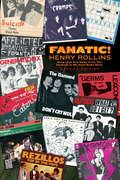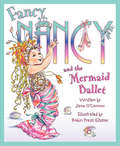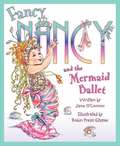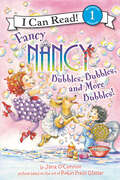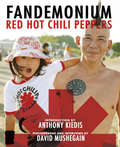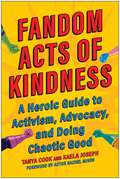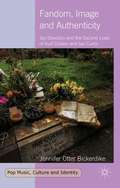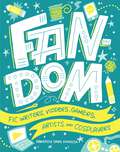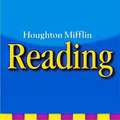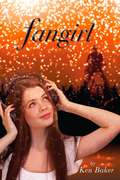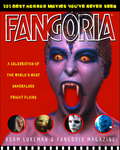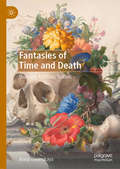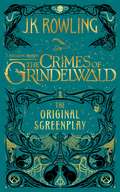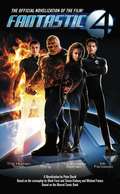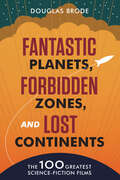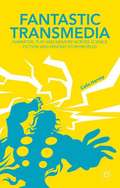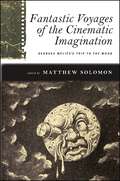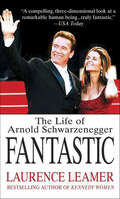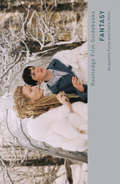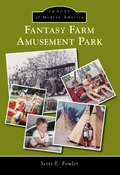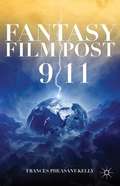- Table View
- List View
Fanatic!
by Henry RollinsIn 2004, when legendary Los Angeles radio station Indie 103.1 asked Henry Rollins to host a show, he jumped at the chance. He chose the name "Harmony in My Head," based on his favorite Buzzcocks tune. As lead man for Black Flag, Rollins was present at the raw beginnings of punk and knew many of its stars. But Rollins' taste encompassed more than punk, and the show became a cult favorite featuring artists as disparate as the Stooges, Miriam Makeba, the Simpletones, Slim Galliard, and the Weirdos. An inspired Rollins began compiling extensive annotations for each song he played, a mix of history, anecdote, and Rollins's trademark trenchant opinions. His show can still be heard online in streaming audio, and his notes live on in this irresistible collection.
Fancy Nancy and the Mermaid Ballet (Fancy Nancy)
by Jane O'Connor*NOW A HIT TV SERIES ON DISNEY JUNIOR*From the dazzling bestselling duo Jane O’Connor and Robin Preiss Glasser comes a fancy, frilly ballet story with a lot of heart. Young ballerinas and Fancy Nancy fans will shout encore!Fancy Nancy is ready for the spotlight! Fancy Nancy and her best friend, Bree, couldn't be more excited about their upcoming dance show. After all, it's all about mermaids, and who knows how to be a fancy, glamorous mermaid better than Fancy Nancy herself?But when another ballerina wins the coveted role of the mermaid, Nancy is stuck playing a dreary, dull tree. Can Nancy bring fancy flair to her role, even though it isn't the one she wanted? And when disaster strikes right before the big ballet, who will step into the spotlight? Perfect for fans of the Eloise and Olivia books. Ooh la la! Fancy Nancy is starring in her own fabulous TV show on Disney Junior. READ THE BOOKS THAT STARTED IT ALL!Fancy NancyFancy Nancy and the Posh PuppyFancy Nancy: Bonjour, ButterflyFancy Nancy: Splendiferous ChristmasFancy Nancy and the Fabulous Fashion BoutiqueFancy Nancy and the Mermaid BalletFancy Nancy: Fanciest Doll in the UniverseFancy Nancy and the Wedding of the CenturyFancy Nancy 10th Anniversary EditionFancy Nancy: Saturday Night SleepoverFancy Nancy: Oodles of Kittens
Fancy Nancy and the Mermaid Ballet (I Can Read!)
by Jane O'Connor<P>Fancy Nancy is ready for the spotlight! <P>Fancy Nancy and her best friend, Bree, couldn't be more excited about their upcoming dance show. After all, it's all about mermaids--and who knows how to be a fancy, glamorous mermaid better than Fancy Nancy herself? But when another ballerina wins the coveted role of the mermaid, Nancy is stuck playing a dreary, dull tree. <P>Can Nancy bring fancy flair to her role, even though it isn't the one she wanted? And when disaster strikes right before the big ballet, who will step in to steal the spotlight? <P>From bestselling duo Jane O'Connor and Robin Preiss Glasser comes a fancy, frilly ballet story with a lot of heart. Tiny fans will shout "Encore!" Picture descriptions present.
Fancy Nancy: Bubbles, Bubbles, and More Bubbles! (I Can Read Level 1)
by Jane O'ConnorFancy Nancy and her class are going to see The Big Bubble Show!Nancy and Bree can’t wait to go. But when Bree gets sick and has to miss the show, Nancy decides to put on a bubble show of her own. Will Nancy and her classmates be able to put on the best bubble show ever?From the beloved New York Times bestselling author-illustrator team Jane O’Connor and Robin Preiss Glasser, Fancy Nancy: Bubbles, Bubbles, and More Bubbles is a Level One I Can Read, perfect for children learning to sound out words and sentences.
Fandemonium: Red Hot Chili Peppers
by David Mushegain Anthony KiedisOne-of-a-kind tribute from one of the best-selling bands in the world direct to their legions of fans.<P><P> The Red Hot Chili Peppers' performances have become legendary as much for the music and antics on stage as the generous, loving community of people who stand side by side, screaming their approval. This is a fan appreciation book from the band that puts the emphasis where it should be--on the fans. A vivid montage of words from the band members to their fans, it includes hundreds of photos taken at concerts worldwide, and interviews with fifty of the most devoted RHCP fans around the globe. The stories that emerge range from fantastic to tragic, but always inspirational and life-affirming. Lead singer Anthony Kiedis--New York Times best-selling author of his memoir, Scar Tissue--writes about the making of this book, and tells the story of the band's connection with their fans from day one in 1983 and how that relationship has evolved over three decades. Designed with a DIY/fanzine feel, this book is more than a fan tribute; it's a cultural exchange that captures the unique connection of an iconic band as devoted to their fans as the fans are to them.
Fandom Acts of Kindness: A Heroic Guide to Activism, Advocacy, and Doing Chaotic Good
by Tanya Cook Kaela JosephFandom can save the world! This first of its kind, actionable and inspirational resource provides the tools and motivation necessary for pop culture fans to make a difference—while having fun! Fandoms are united as a community because of the power of story. And it&’s exactly the magical alchemy forged when mixing story and community that has helped fandoms across the world feed thousands of hungry children, donate countless books, build schools, register voters, disrupt online hate speech, and save lives through crafting PPE for COVID-19 frontline workers, natural disaster response, and mental health crisis support. Fandom Acts of Kindness not only tells the stories of the good fans have done in the world but serves as a dungeon master&’s guide to how to be a hero yourself. Perfect for those who want to inspire others, organize collective action, sustain, and nurture your own mental health and creativity, and do it all through a pop culture perspective.
Fandom, Image and Authenticity
by Jennifer Otter BickerdikeKurt Cobain and Ian Curtis. Their early and unexpected deaths propelled them to iconic status, as beacons for the values of individuality and authenticity. However, with each passing year, the images of the lead men become further removed from their original humanity. From Converse to cake, this book examines how their 'brands' lend credibility to commerce, while the increasing worth placed on the singers provides a modern example of a secular belief system propelled by media, technology and the value of immediacy in the 2. 0 world. Journeys to spaces and places associated with the two singers are akin to pilgrimages, sacred trips that hope to capture and connect with the very essences that the men have been stripped of in their ever-widening appeal. Within this context, Curtis and Cobain become guides and Anglicised role models in the search for personal identity and community in the modern uncertain world.
Fandom: Fic Writers, Vidders, Gamers, Artists, and Cosplayers
by Francesca Davis DiPiazzaHave you ever finished a book or TV series and wished for more? Created stories, art, or videos based on a game? Dressed up as your favorite character? If so, you've entered fandom. Fan writers expand and mix up stories, like sending the Star Trek crew to Hogwarts. Cosplayers sew Star Wars and Sailor Moon costumes, and fan filmmakers make music video tributes. Fans also enrich invented worlds with greater diversity, creating female and multiracial avatars for games peopled only with white male characters. Tour fandom's history and meet fan writers, video-makers, artists, costumers, and gamers who celebrate the things they love and shape fan communities online and in real life.
Fanfare for Food (Houghton Mifflin Harcourt Vocabulary Readers #Leveled Reader: Level: 5, Theme: 2.2)
by Gary MillerThe story of a boy who uses his musical talent to help fight hunger in Vermont.
Fangirl
by Ken BakerWhile staring you straight in the eye, far above the tips of her Toms, Josie Brant would swear that she does not like Peter Maxx, the teen sensation who causes every girl within a 100-foot radius to scream at ear-shattering decibels. Even if Josie may completely, totally, and unequivocally be his biggest fan. So when Josie finds out her best friend has won a contest to meet Peter by stealing one of Josie’s songs, Josie is overwhelmingly shocked and upset-some of which flies out the window when Ashley introduces Josie to Peter as well. And suddenly, in a whirlwind of Tweets, IMs, texts, and phone calls, Josie finds herself in the middle of a flirtatious friendship that has the potential for complete harmony. But just when everything seems pitch-perfect, the paparazzi flashbulbs explode, along with any notion of a fairy-tale romance. Author Ken Baker, E! Channel’s Chief News Correspondent, uses his inside knowledge to craft a novel authentic to the teen pop idol experience with sincere heart and humor.
Fangoria's 101 Best Horror Movies You've Never Seen
by Adam LukemanA FEAST OF FRIGHTFUL FLICKS WAITING TO BE REDISCOVEREDAs the leading name in the world of horror, Fangoria magazine has been the source of information for fans of fright flicks for more than twenty years--covering feature films, video games, comic books, collectibles, and all aspects of horror entertainment. Working closely with Fangoria's experts, including Editor in Chief Anthony Timpone, Adam Lukeman has compiled a must-have guide for casual horror fans and hardcore horror junkies with Fangoria's 101 Best Horror Films You've Never Seen. With a brief synopsis for each of the included films, lists of cast and crew, "Terror Trivia," and little-known facts about these lesser-known but must-see gems, Fangoria's 101 Best Horror Films You've Never Seen offers a feast of gruesome information. Featured here are flicks that were dumped by their distributors or were initially flops, like Cherry Falls, Manhunter, and Pumpkinhead, foreign winners such as Cronos, The Vanishing, and Funny Games, and straight-to-video sleepers waiting to be discovered, including Shadowbuilder, Jack Be Nimble, and Nomads. There are even surprise entries directed by industry giants--movies like George A. Romero's Day of the Dead, Brian De Palma's Sisters, or Dario Argento's Opera--that are frequently overshadowed by the filmmakers' other, better-known works but are worthy of further examination. Entertaining and informative, Fangoria's 101 Best Horror Movies You've Never Seen offers more than a hundred reasons to look beyond the often ho-hum Hollywood hype fests . . . when you're really in the mood to feel your flesh crawl.From the Trade Paperback edition.
Fantasies of Neglect
by Pamela Robertson WojcikIn our current era of helicopter parenting and stranger danger, an unaccompanied child wandering through the city might commonly be viewed as a victim of abuse and neglect. However, from the early twentieth century to the present day, countless books and films have portrayed the solitary exploration of urban spaces as a source of empowerment and delight for children. Fantasies of Neglect explains how this trope of the self-sufficient, mobile urban child originated and considers why it persists, even as it goes against the grain of social reality. Drawing from a wide range of films, children's books, adult novels, and sociological texts, Pamela Robertson Wojcik investigates how cities have simultaneously been demonized as dangerous spaces unfit for children and romanticized as wondrous playgrounds that foster a kid's independence and imagination. Charting the development of free-range urban child characters from Little Orphan Annie to Harriet the Spy to Hugo Cabret, and from Shirley Temple to the Dead End Kids, she considers the ongoing dialogue between these fictional representations and shifting discourses on the freedom and neglect of children. While tracking the general concerns Americans have expressed regarding the abstract figure of the child, the book also examines the varied attitudes toward specific types of urban children--girls and boys, blacks and whites, rich kids and poor ones, loners and neighborhood gangs. Through this diverse selection of sources, Fantasies of Neglect presents a nuanced chronicle of how notions of American urbanism and American childhood have grown up together.
Fantasies of Neglect: Imagining the Urban Child in American Film and Fiction
by Pamela Robertson WojcikIn our current era of helicopter parenting and stranger danger, an unaccompanied child wandering through the city might commonly be viewed as a victim of abuse and neglect. However, from the early twentieth century to the present day, countless books and films have portrayed the solitary exploration of urban spaces as a source of empowerment and delight for children. Fantasies of Neglect explains how this trope of the self-sufficient, mobile urban child originated and considers why it persists, even as it goes against the grain of social reality. Drawing from a wide range of films, children's books, adult novels, and sociological texts, Pamela Robertson Wojcik investigates how cities have simultaneously been demonized as dangerous spaces unfit for children and romanticized as wondrous playgrounds that foster a kid's independence and imagination. Charting the development of free-range urban child characters from Little Orphan Annie to Harriet the Spy to Hugo Cabret, and from Shirley Temple to the Dead End Kids, she considers the ongoing dialogue between these fictional representations and shifting discourses on the freedom and neglect of children. While tracking the general concerns Americans have expressed regarding the abstract figure of the child, the book also examines the varied attitudes toward specific types of urban children--girls and boys, blacks and whites, rich kids and poor ones, loners and neighborhood gangs. Through this diverse selection of sources, Fantasies of Neglect presents a nuanced chronicle of how notions of American urbanism and American childhood have grown up together.
Fantasies of Time and Death: Dunsany, Eddison, Tolkien
by Anna VaninskayaThis book reveals the unique contribution made by the three founding fathers of British fantasy—Lord Dunsany, E. R. Eddison and J. R. R. Tolkien—to our culture’s perennial reassessment of the meanings of time, death and eternity. It traces the poetic, philosophical and theological roots of the striking preoccupation with mortality and temporality that defines the imagined worlds of early fantasy fiction, and gives both the form of such fiction and its ideas the attention they deserve. Dunsany, Eddison and Tolkien raise some of the oldest questions in existence: about the limits of nature, human and divine; cosmic creation and destruction; the immortality conferred by art and memory; and the paradoxes and uncertainties generated by the universal experience of transience, the fear of annihilation and the desire for transcendence. But they respond to those questions by means of thought experiments that have no precedent in modern literary history.
Fantasies of the Master Race: Literature, Cinema and the Colonization of American Indians
by Ward Churchill M. Annette JaimesIn this volume of incisive essays, Ward Churchill looks at representations of American Indians in literature and film, delineating a history of cultural propaganda that has served to support the continued colonization of Native America. During each phase of the genocide of American Indians, the media has played a critical role in creating easily digestible stereotypes of Indians for popular consumption. Literature about Indians was first written and published in order to provoke and sanctify warfare against them. Later, the focus changed to enlisting public support for "civilizing the savages," stripping them of their culture and assimilating them into the dominant society. Now, in the final stages of cultural genocide, it is the appropriation and stereotyping of Native culture that establishes control over knowledge and truth.
Fantastic Beasts: The Crimes of Grindelwald - The Original Screenplay (Harry Potter)
by J. K. Rowling Mina Lima<p>J.K. Rowling's five-film Fantastic Beasts adventure series continues with the original screenplay for Fantastic Beasts: The Crimes of Grindelwald. <p>At the end of Fantastic Beasts and Where to Find Them, the powerful Dark wizard Gellert Grindelwald was captured in New York with the help of Newt Scamander. But, making good on his threat, Grindelwald escapes custody and sets about gathering followers, most unsuspecting of his true agenda: to raise pure-blood wizards up to rule over all non-magical beings. <p>In an effort to thwart Grindelwald's plans, Albus Dumbledore enlists Newt, his former Hogwarts student, who agrees to help once again, unaware of the dangers that lie ahead. Lines are drawn as love and loyalty are tested, even among the truest friends and family, in an increasingly divided wizarding world. <p>This second original screenplay from J.K. Rowling, illustrated with stunning line art from MinaLima, expands on earlier events that helped shape the wizarding world, with some surprising nods to the Harry Potter stories that will delight fans of both the books and films.</p>
Fantastic Four: Official novelization of the new film
by Peter DavidScientific genius Dr. Reed Richards' lifelong dream is close to being realized--a trip to space and to the center of a cosmic storm to unlock the secrets of the human genetic code. Financed by rival-turned-billionaire-industrialist Victor Von Doom, Reed's crew for the mission includes his best friend, astronaut Ben Grimm; Susan Storm, Von Doom's director of genetic research and Reed's ex-girlfriend; and Sue's hot-headed younger brother, pilot Johnny Storm. With benefactor Von Doom in tow, the four set off for the exploration of a lifetime. But something goes terribly wrong, as cosmic radiation irrevocably alters their DNA and their future. Back on Earth, the effects of the exposure are quickly revealed: Reed gains the ability to stretch and contort his body into any shape he can imagine. Sue is able to render herself invisible and to create and project powerful force fields. Johnny can now engulf his body in flames and take flight at will, and Ben, whose freakish transmutation is the most shocking, becomes an orange-colored, rock-like, superhumanly strong creature. Together, they turn tragedy into triumph and catastrophe into coalition, and must use their unique and formidable powers against Victor Von Doom--who has also not escaped the effects of the cosmic storm unscathed. Adventurers. Super Heroes. Celebrities. To the world, they are the Fantastic Four. To each other, they are a family.
Fantastic Planets, Forbidden Zones, and Lost Continents: The 100 Greatest Science-Fiction Films
by Douglas BrodeWhether you judge by box office receipts, industry awards, or critical accolades, science fiction films are the most popular movies now being produced and distributed around the world. Nor is this phenomenon new. Sci-fi filmmakers and audiences have been exploring fantastic planets, forbidden zones, and lost continents ever since George Méliès’ 1902 film A Trip to the Moon. In this highly entertaining and knowledgeable book, film historian and pop culture expert Douglas Brode picks the one hundred greatest sci-fi films of all time. Brode’s list ranges from today’s blockbusters to forgotten gems, with surprises for even the most informed fans and scholars. He presents the movies in chronological order, which effectively makes this book a concise history of the sci-fi film genre. A striking (and in many cases rare) photograph accompanies each entry, for which Brode provides a numerical rating, key credits and cast members, brief plot summary, background on the film’s creation, elements of the moviemaking process, analysis of the major theme(s), and trivia. He also includes fun outtakes, including his top ten lists of Fifties sci-fi movies, cult sci-fi, least necessary movie remakes, and “so bad they’re great” classics—as well as the ten worst sci-fi movies (“those highly ambitious films that promised much and delivered nil”). So climb aboard spaceship Brode and journey to strange new worlds from Metropolis (1927) to Guardians of the Galaxy (2014).
Fantastic Planets, Forbidden Zones, and Lost Continents: The 100 Greatest Science-Fiction Films
by Douglas BrodeWhether you judge by box office receipts, industry awards, or critical accolades, science fiction films are the most popular movies now being produced and distributed around the world. Nor is this phenomenon new. Sci-fi filmmakers and audiences have been exploring fantastic planets, forbidden zones, and lost continents ever since George Méliès’ 1902 film A Trip to the Moon. In this highly entertaining and knowledgeable book, film historian and pop culture expert Douglas Brode picks the one hundred greatest sci-fi films of all time. Brode’s list ranges from today’s blockbusters to forgotten gems, with surprises for even the most informed fans and scholars. He presents the movies in chronological order, which effectively makes this book a concise history of the sci-fi film genre. A striking (and in many cases rare) photograph accompanies each entry, for which Brode provides a numerical rating, key credits and cast members, brief plot summary, background on the film’s creation, elements of the moviemaking process, analysis of the major theme(s), and trivia. He also includes fun outtakes, including his top ten lists of Fifties sci-fi movies, cult sci-fi, least necessary movie remakes, and “so bad they’re great” classics—as well as the ten worst sci-fi movies (“those highly ambitious films that promised much and delivered nil”). So climb aboard spaceship Brode and journey to strange new worlds from Metropolis (1927) to Guardians of the Galaxy (2014).
Fantastic Transmedia: Narrative, Play and Memory Across Science Fiction and Fantasy Storyworlds
by Colin B. HarveyContemporary culture is packed with fantasy and science fiction storyworlds extending across multiple media platforms. This book explores the myriad ways in which imaginary worlds use media like films, novels, videogames, comic books, toys and increasingly user-generated content to captivate and energise contemporary audiences.
Fantastic Voyages of the Cinematic Imagination: Georges Méliès's Trip to the Moon (SUNY series, Horizons of Cinema)
by Matthew Solomon"Best moving pictures I ever saw." Thus did one Vaudeville theater manager describe Georges Méliès's A Trip to the Moon [Le Voyage dans la lune], after it was screened for enthusiastic audiences in October 1902. Cinema's first true blockbuster, A Trip to the Moon still inspires such superlatives and continues to be widely viewed on DVD, on the Internet, and in countless film courses. In Fantastic Voyages of the Cinematic Imagination, leading film scholars examine Méliès's landmark film in detail, demonstrating its many crucial connecions to literature, popular culture, and visual culture of the time, as well as its long "afterlife" in more recent films, television, and music videos. Together, these essays make clear that Méliès was not only a major filmmaker but also a key figure in the emergence of modern spectacle and the birth of the modern cinematic imagination, and by bringing interdisciplinary methodologies of early cinema studies to bear on A Trip to the Moon, the contributors also open up much larger questions about aesthetics, media, and modernity.In his introduction, Matthew Solomon traces the convoluted provenance of the film's multiple versions and its key place in the historiography of cinema, and an appendix contains a useful dossier of primary-source documents that contextualize the film's production, along with translations of two major articles written by Méliès himself.
Fantastic: The Life of Arnold Schwarzenegger
by Laurence LeamerThe life of Arnold Schwarzenegger is one of the most remarkable success stories in the U.S. Here is a young man from an Austrian village who became the greatest bodybuilder in history, a behemoth who even today in retirement is the dominating figure in the sport. Here is an immigrant with a heavy accent and a four syllable last name, who marries a Kennedy princess and becomes the number one movie star in the world, an icon known and celebrated everywhere. Here is a political novice with no administrative experience who becomes governor of California in one of the most unusual and controversial elections in American history, and confounds his critics by proving an effective, popular leader. In Fantastic, Leamer shows how and why this man of willful ambition and limitless drive achieved his unprecedented accomplishments. As the author of a celebrated trilogy on the Kennedy family, Leamer has access to a unique array of sources. Leamer traveled with candidate Schwarzenegger during the gubernatorial campaign. He has interviewed Governor Schwarzenegger and his wife Maria Shriver, and their closest friends and associates, most of whom had never talked to an author before. The result is a startlingly intimate book, the pages studded with news making revelations. This book of passionate intensity captures a Schwarzenegger unlike any other public figure of our time, a unique political/cultural figure, his time in Sacramento only a way station on a journey where no one has traveled before. The book captures the personal Schwarzenegger, too, and the story of his single days, marriage, and family life. No one who reads this book will ever see Schwarzenegger in the same way again.
Fantasy (Routledge Film Guidebooks)
by Claire Hines Jacqueline FurbyFantasy addresses a previously neglected area within film studies. The book looks at the key aesthetics, themes, debates and issues at work within this popular genre and examines films and franchises that illustrate these concerns. Contemporary case studies include: Alice in Wonderland (2010) Avatar (2009) The Dark Knight (2008) Edward Scissorhands (1990) Lord of the Rings (2001-2003) Pirates of the Caribbean (2003-2007) Prince of Persia: The Sands of Time (2010) Shrek (2001) Twelve Monkeys (1995) The authors also consider fantasy film and its relationship to myth, legend and fairy tale, examining its important role in contemporary culture. The book provides an historical overview of the genre, its influences and evolution, placing fantasy film within the socio-cultural contexts of production and consumption and with reference to relevant theory and critical debates. This is the perfect introduction to the world of fantasy film and investigates the links between fantasy film and gender, fantasy film and race, fantasy film and psychoanalysis, fantasy film and technology, fantasy film storytelling and spectacle, fantasy film and realism, fantasy film and adaptation, and fantasy film and time.
Fantasy Farm Amusement Park
by Scott E. FowlerNot many developers would build an amusement park next door to the successful LeSourdsville Lake amusement park, but Edgar Streifthau was a one-of-a-kind man in Butler County, Ohio. Streifthau, the original owner of LeSourdsville, was forced to sell his beloved park, but he still had the amusement-park bug, and in 1963 he built Fantasy Farm directly next to LeSourdsville. Fantasy Farm's audience was young children, and the concept was successful for decades. The two parks coexisted for 28 years despite periodically appearing in court opposite each other. In 1982, Streifthau sold Fantasy Farm to local carnival owner William Johnson, who ran the park for another decade before finally becoming a victim of the economy. Johnson closed Fantasy Farm in 1991 and sold off all of its assets.
Fantasy Film Post 9/11
by Frances Pheasant-KellyExamining a range of fantasy films released in the past decade, Pheasant-Kelly looks at why these films are meaningful to current audiences. The imagery and themes reflecting 9/11, millennial anxieties, and environmental disasters have furthered fantasy's rise to dominance as they allow viewers to work through traumatic memories of these issues.
